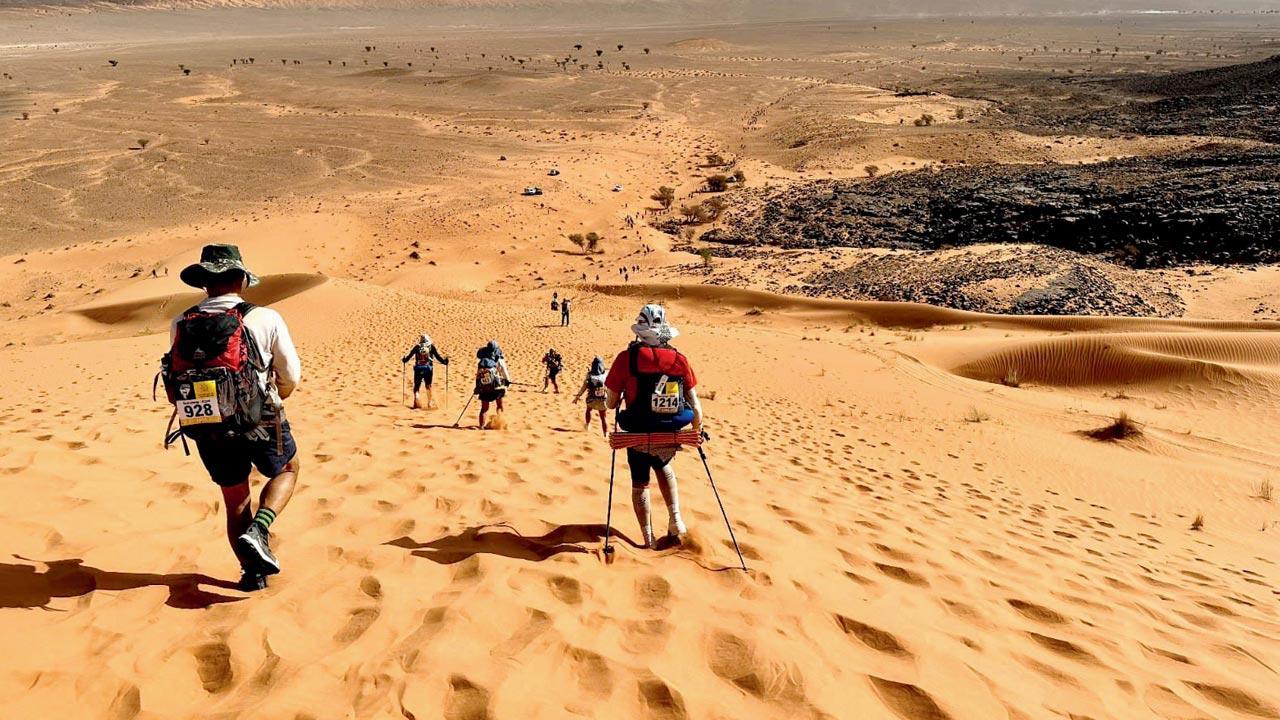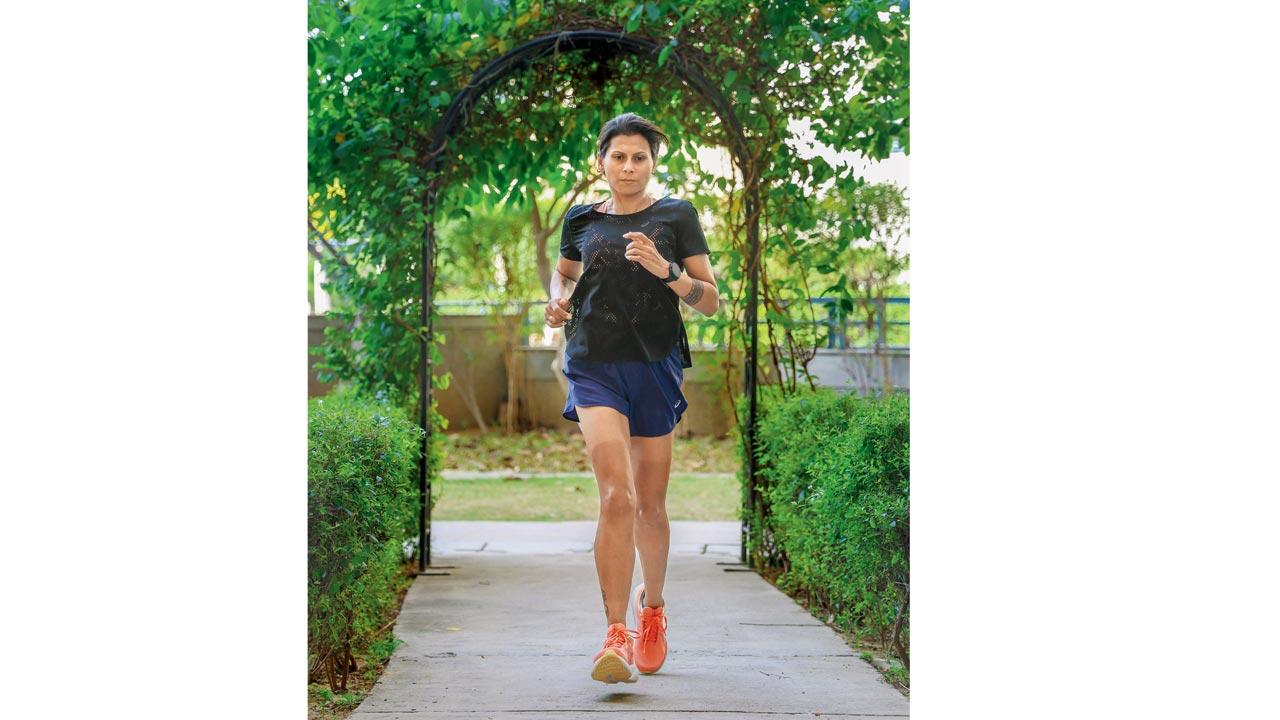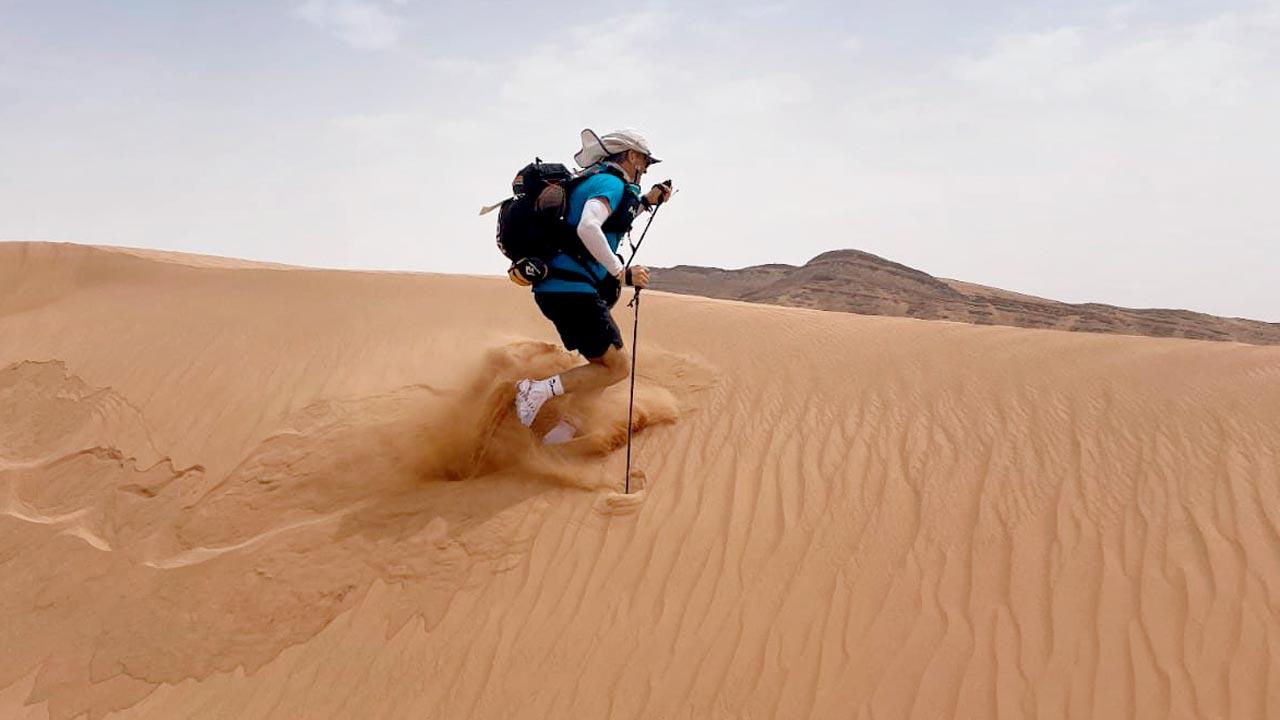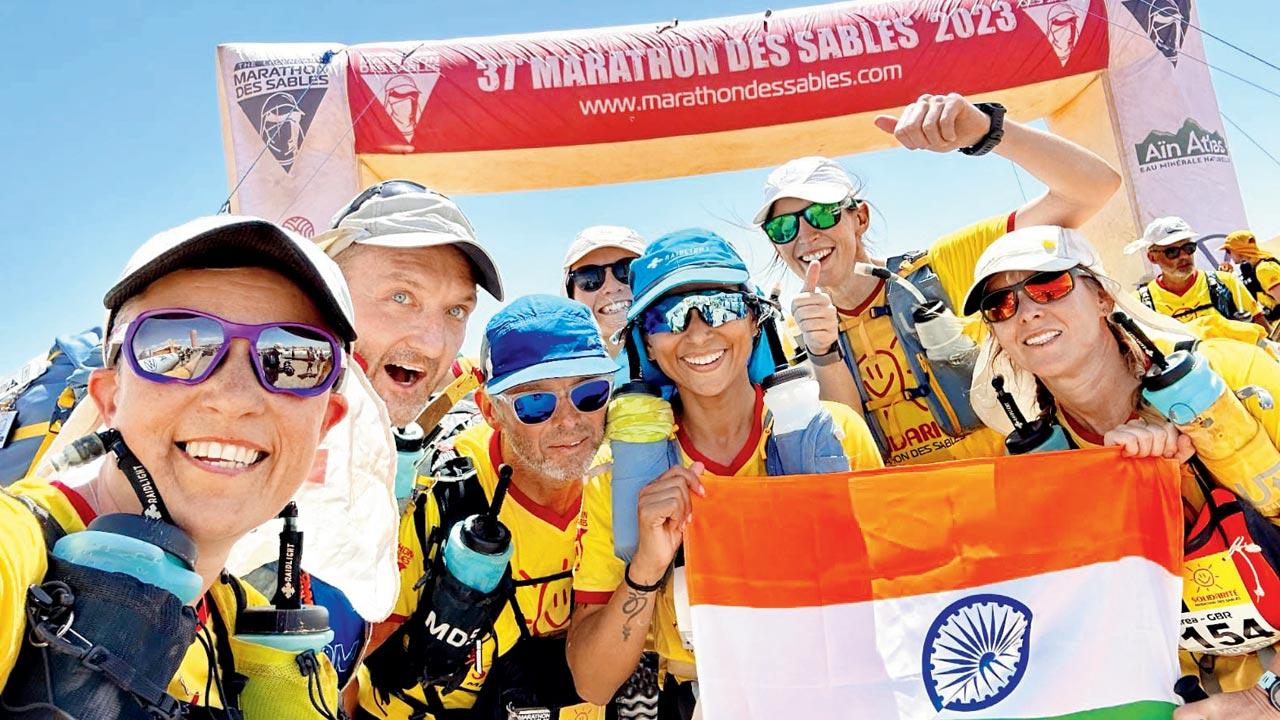How Mahasweta Ghosh became the first Indian woman to complete the toughest, hottest ultramarathon in barren Sahara

The race terrain is unrelenting with rocky mountains, intense sandstorms and miles of high sandy dunes
It was the 2019 Netflix docu series, Losers, that inspired Mahasweta Ghosh to brave the brutal Sahara desert. The fifth episode in that series was on Italian Olympian Mauro Prosperi, whose attempt to finish a desert endurance race in the arid Moroccan landscape turned into a nightmarish battle for survival, after a sandstorm took him off course. “He was found nine days later... in Algeria,” Gurugram-based Ghosh, 44, says over a video call. Prosperi had chosen to run the most daunting of foot races in the world—the Marathon des Sables (MDS) or Marathon of the sands, a six-day 250 km-long ultramarathon, which is said to be the distance of six regular marathons, and among the toughest races in the world, with one of the highest attrition rates.
Ghosh, a Boston-qualified marathoner, wanted to experience first-hand what it meant to race on such a perilous trail. The pandemic upended her plans briefly, until she decided last December to take the plunge.
 Gurugram-based Mahasweta Ghosh, 44, ran the 250 km-long Marathon des Sables last month. It is among the toughest races in the world, with one of the highest attrition rates. Pic/Nishad Alam
Gurugram-based Mahasweta Ghosh, 44, ran the 250 km-long Marathon des Sables last month. It is among the toughest races in the world, with one of the highest attrition rates. Pic/Nishad Alam
Running marathons since 2012, Ghosh, who has a full-time tech marketing job, says she had the advantage, “because I am always in training... it’s a way of my life”. “I also don’t do too many races in the year. I just train for one, and for a substantial amount of time. This puts me in a good state of endurance.”
Training in Gurugram brought its own set of challenges. “Here, we do not have exposure to different terrains... you can’t run away to the hills and mountains, not if you have a full-time job at least.” Ghosh had previously done a 75 km-desert run in Pokhran, Rajasthan. But Marathon des Sables, she was aware, came nothing close.
 The sand dunes, says Ghosh, are tricky and strenuous to climb, “because it is soft ground, and you don’t gain as much distance as you think you are gaining”
The sand dunes, says Ghosh, are tricky and strenuous to climb, “because it is soft ground, and you don’t gain as much distance as you think you are gaining”
MDS participants face extreme conditions, running in temperatures touching 40 degree Celsius. The terrain of the Sahara desert is also unrelenting, with rocky mountains, intense sandstorms and miles of high sandy dunes. “There are times when the sand is way above the ankle, making it difficult while you are trying to move; the lucky patches are when only your foot is in sand,” says Ghosh. “The mountains too, are rocky and sandy at the same time. They are at an elevation of 700 metres. While climbing up, you face the risk of sliding down, as the base is loose sand. Then, there are the sand dunes, which are tricky and strenuous to climb, because it is soft ground, and you don’t gain as much distance as you think you are gaining... that can be psychologically challenging. Not to mention, the sand can get really hot. Even the flat surfaces have rocky terrain, with small, pointy and sharp rocks created due to sand erosion. One runs the risk of bursting their shoe in such conditions.”
Making this race even more arduous is the fact that participants are entirely unsupported. Organisers commit to giving 12 litres of water each day for drinking, cooking, and cleaning. The rest, which includes food and race supplies, like sleeping surfaces, stoves and clothes, have to be arranged by the participants.
This year’s race, which is the 37th edition, began on April 23. Her first impressions of the barren landscape was that it was beautiful and natural with waves of yellow-golden sand. “You don’t see animals, or people, except the ones you are running with.” Ghosh was the only Indian running, and for most part, she was on her own, meeting racers as they passed by. “The race is a six-stage one, and you have to qualify each stage, before you move to the next,” she says, “Every day is a race in itself. There is start time, and cut off to finish.” Participants were also carrying their own bags—as a rule, the bag weight has to be between 6.5 and 14 kg; Ghosh’s bag weighed 11.5 kg.
 Ghosh with other participants after finishing the foot race on April 29
Ghosh with other participants after finishing the foot race on April 29
In the first three days, the runners had to average about 40 km each day. Day 4 is the longest, where participants had to cover a 90 km-stretch with a 36-hour cutoff. “That was brutally tough,” she recalls, “There was this one dune that I managed to climb, but when walking down, it was so steep, I couldn’t see the base. They do tie a rope to provide support.” Every participant had their own strategy to complete this particular leg—Ghosh chose to run through the day and night. “When running in the night, one has to be very cautious, because you can lose your way. While the route is well marked, and thanks to technology, everyone is being tracked live, it can be distressing,” says Ghosh, “It is very dark, and you are completely dependent on your head lamp. It [the environment] is still like [you are running in] vacuum. You do not hear a thing, not even the crawling insects. I remember listening to music, so that I didn’t get engulfed in that void.”
At some point, her food supplies also ran out. Participants are expected to consume a mandatory 2,000 calories daily. Ghosh had stocked oats, nutri bars, and dehydrated dal-rice packs. “I had exhausted the food I had brought, sooner than expected, and I was literally without food for half of the run... I was starving and hungry,” she remembers, “When I reached the camp site 23 hours later, I broke down. I had blisters on my right foot, and my left foot was swollen.”
When Ghosh completed her race two days later, it was a surreal moment—she is the first woman of Indian origin to make it to the finish line. The intense heat this year, resulted in heat stroke, exhaustion, and the second-highest dropout rate in the 37-year history of the race—30 per cent. Around 1,085 started the race on stage 1, and after completing the charity (last) stage, 764 were confirmed finishers. The first picture she took after the win was of her with the Indian flag. “That picture was what I manifested every time I struggled during the race... it made me feel immensely proud and happy.”
40
No. of kms participants cover daily in first 3 days
 Subscribe today by clicking the link and stay updated with the latest news!" Click here!
Subscribe today by clicking the link and stay updated with the latest news!" Click here!










